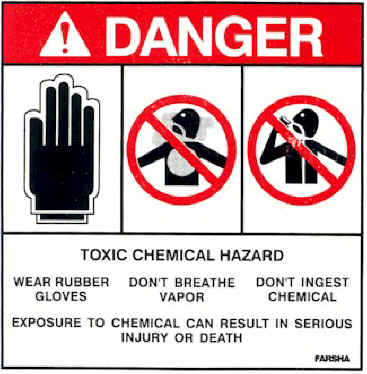| << Chapter < Page | Chapter >> Page > |
Semiconductor-manufacturing companies often portray their fabrication facilities as being clean,environmentally friendly, and conspicuously free of the black, billowing smokestacks that have come to be associated with theplants and factories of other major industries. These facilities produce no visible pollution and certainly do not appear to poseany health or environmental risks.
In truth, the term “clean room,” itself is more than just a bit of an understatement. Industry executivesoften boast that their clean rooms are from 1,000 times to 10,000 times cleaner and more sanitary than any hospital operatingroom.
The use of sterile techniques and the fastidious attention devoted to cleanliness in the semiconductorindustry may perpetuate the illusion that the manufacturing of semiconductors is a safe and sterile process. However, as a rapidlygrowing body of evidence continues to suggest, hardly anything could be further from the truth ( [link] ). The question of worker safety and chemical contamination at chip-making plants has received anincreasing amount of attention over the course of the past decade.

The devices being built at semiconductor fabrication facilities are super-sensitive to environmental contaminants.Because each chip takes dozens of trained personnel several weeks to complete, an enormous amount of time and effort is expended toproduce a single wafer. The industry may pride itself on its perfectly immaculate laboratories and its bunny-suited workers, butit should be noted that the bunny suits are not designed to protect their wearers from hazardous materials but rather to protect theactual semiconductor products from coming into contact with dirt, hair, flakes of skin, and other contaminants that can be shed fromhuman bodies. They protect the silicon wafers from the people, not the people from the chemicals.
Lee Neal, the head of safety, health, and environmental affairs for the Semiconductor Industry Association,has been quoted as saying, “This is an environment that is cleaner than an operating room at a hospital.” However, this boast iscurrently being challenged by industry workers, government scientists, and occupational-health experts across the country andworldwide.
Industrial hygiene has always been an issue in the semiconductor industry. Many of the chemicals involved inthe manufacturing process of semiconductors are known human carcinogens or pose some other serious health risk if not containedproperly. [link] lists ten of the hazardous chemicals most commonly used in manufacturing semiconductors along with theirknown effects on human health.
| Chemical name | Role in manufacturing process | Health problems linked to exposure |
| Acetone | Chemical-mechanical polishing of silicon wafers | Nose, throat, lung, and eye irritation, damage to the skin, confusion, unconsciousness, possible coma |
| Arsenic | Increases conductivity of semiconductor material | Nausea, delirium, vomiting, dyspepsia, diarrhea, decrease in erythrocyte and leukocyte production, abnormal heart rhythm, bloodvessel damage, extensive tissue damage to nerves, stomach, intestine, and skin, known human carcinogen for lung cancer |
| Arsine | Chemical vapor deposition | Headache, malaise, weakness, vertigo, dyspnea, nausea, abdominal and back pain, jaundice, peripheral neuropathy,anemia |
| Benzene | Photoelectrochemical etching | Damage to bone marrow, anemia, excessive bleeding, immune system effects, increased chance of infection, reproductiveeffects, known human carcinogen for leukemia |
| Cadmium | Creates “holes” in silicon lattice to create effect of positive charge | Damage to lungs, renal dysfunction, immediate hepatic injury, bone defects, hypertension, reproductive toxicity,teratogenicity, known human carcinogen for lung and prostate cancer |
| Hydrochloric acid | Photoelectrochemical etching | Highly corrosive, severe eye and skin burns, conjunctivitis, dermatitis, respiratory irritation |
| Lead | Electroplated soldering | Damage to renal, reproductive, and immune systems, spontaneous abortion, premature birth, low birth weight, learningdeficits in children, anemia, memory effects, dementia, decreased reaction time, decreased mental ability |
| Methyl chloroform | Washing | Headache, central nervous system depression, poor equilibrium, eye, nose, throat, and skin irritation, cardiacarrhythmia |
| Toluene | Chemical vapor deposition | Weakness, confusion, memory loss, nausea, permanent damage to brain, speech, vision, and hearing problems, loss of musclecontrol, poor balance, neurological problems and retardation of growth in children, suspected human carcinogen for lung and livercancer |
| Trichloroethylene | Washing | Irritation of skin, eyes, and respiratory tract, dizziness, drowsiness, speech and hearing impairment, kidney disease, blooddisorders, stroke, diabetes, suspected human carcinogen for renal cancer |

Notification Switch
Would you like to follow the 'Nanotechnology: content and context' conversation and receive update notifications?